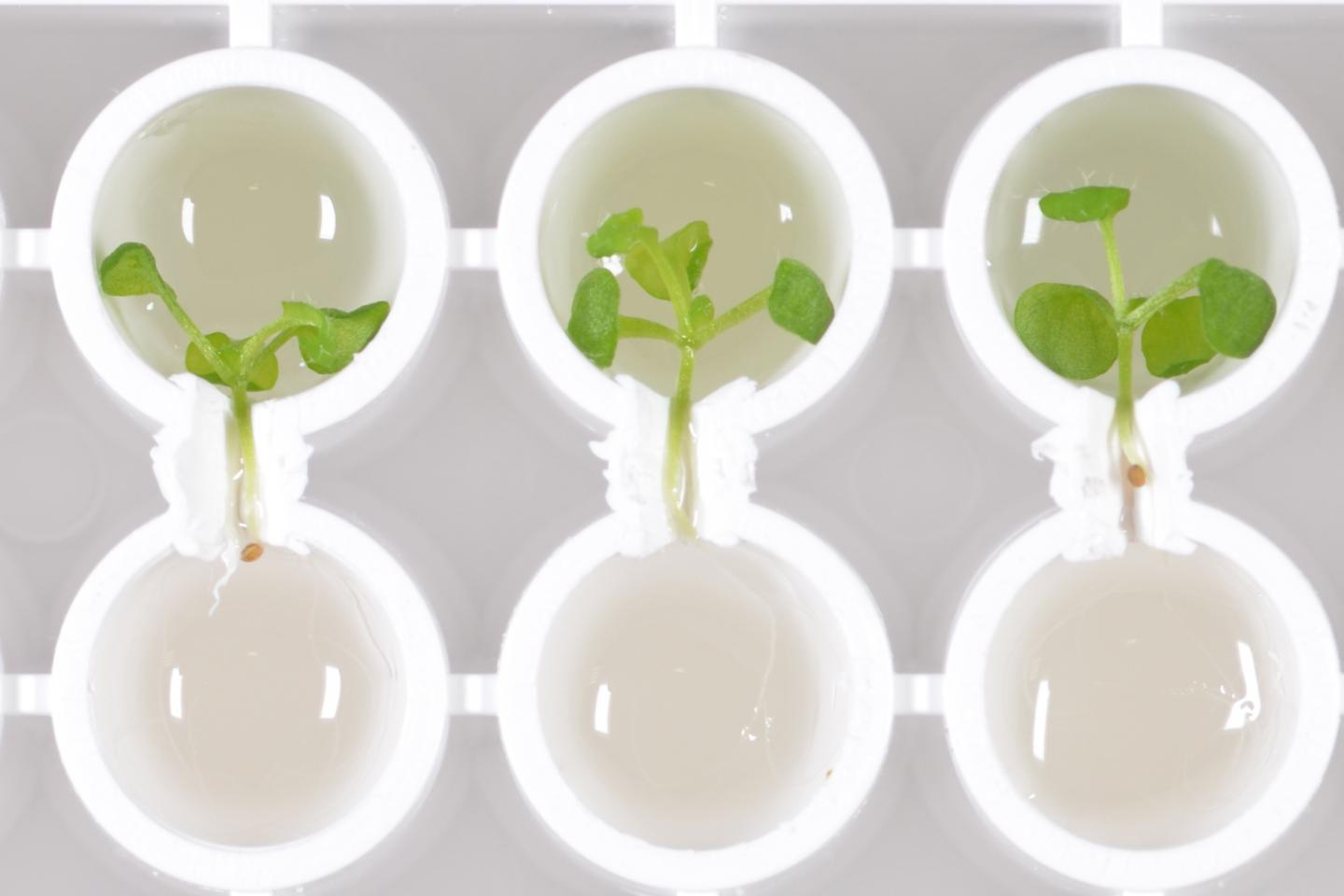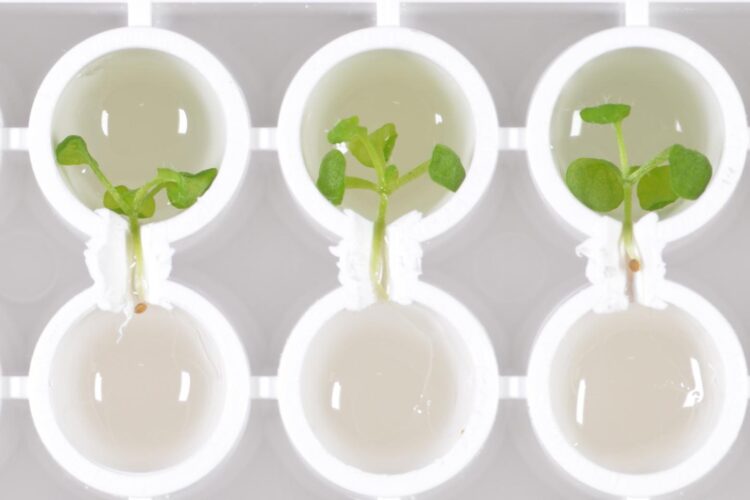The CSIC researcher at CRAG Paloma Mas leads a study published in Nature Plants demonstrating that the clock protein ELF4 moves in sync with temperature to coordinate rhythms in shoots and roots

Credit: CRAG
Five years ago, researchers from the Centre for Research in Agricultural Genomics (CRAG) led by the CSIC Research Professor Paloma Mas made the breakthrough discovery that the circadian clocks in the growing tip of the plant shoot function in a similar way to the clocks in the mammalian brain, which in both cases are able to synchronize the daily rhythms of the cells in distal organs. From that seminal finding, plant researchers have been eager to discover the messenger molecule that could travel from the shoot to the root to orchestrate the rhythms. The answer is just being published this week in the prestigious Nature Plants journal by Paloma Mas’ team and collaborators from Japan, UK, and USA. They have identified a small essential clock protein, named ELF4, as the needed messenger. Furthermore, through a series of ingenious experiments, the researchers have discovered that the movement of this molecule is sensitive to the ambient temperature.
The circadian clock is guided by the activity of proteins
Most living organisms, including humans and plants, have an internal biological clock that allows them to anticipate and adapt to the environmental changes produced by the earth rotation every 24 hours. In plants, this circadian biological clock is crucial to set up the time for germination, growth and flowering, among other processes. The circadian clock is built of a set of cellular proteins whose amount and activity oscillate daily. The researchers who discovered this mechanism were awarded with the Nobel Prize in Physiology or Medicine in 2017.
Every plant cell contains a circadian clock, that is, it contains all the machinery needed to adapt its responses to the 24 hour-cycle. Nevertheless, as CRAG researchers published in a seminal article in Cell (2015), plants, as mammals, have a master circadian clock, which synchronizes peripheral clocks dispersed throughout the plant. The CSIC professor Paloma Mas explains: “we knew that there was a circadian signal that moves from shoots to roots, but we did not know about the nature of this signal. It could have been hormones, photosynthetic products… Now, we have discovered that it is a core protein of the circadian clock that moves though the plant vasculature.”
The researchers designed ingenious grafting experiments with the model plant Arabidopsis thaliana, connecting different shoots into several roots in which the clock was not working properly. These experiments allowed them to identify the clock protein ELF4, an acronym that accounts for “EARLY FLOWERING 4”, as the messenger that moves from shoots to roots to convey circadian information.
ELF4 delivers temperature information to the roots
Anyone who has ever experienced jet lag, knows that, luckily, the circadian biological clock is able to reset itself by environmental light cues, allowing the body to adapt to the new time zone within few days. In the same way that the circadian clock can synchronize to environmental light, it can also integrate information about ambient temperature.
To discern if the ELF4 protein was transmitting to the roots information about light or temperature changes, the two main regulators of the circadian clock, the researchers tested ELF4 movement under different environmental conditions. They discovered that at lower temperatures (12?C), ELF4 mobility from shoots to roots was favoured, resulting in a slow-paced root clock. Instead, when the experiments were performed at higher temperatures (28?C), they observed less ELF4 movement, which lead to a faster root clock. This newly described mechanism could provide an advantage for optimal root responsiveness to temperature variations.
Knowledge to live in a climate changing world
All this knowledge gathered with a small model plant, could have an impact in the near future. “Climate change and the associated higher temperatures are causing drought, which is already affecting crop productivity in agriculture. Knowing the genes and proteins that plants use to adapt their physiology to the environmental conditions will allow us to design better adapted crops, which will be key to ensure food security”, explains CRAG researcher Paloma Mas.
###
The work at Paloma Mas’ laboratory has been funded by the Spanish Ministry of Economy and Competitiveness, by the European Regional Development Fund (ERDF), the Ramon Areces Foundation and by the Generalitat de Catalunya. The firts author Wei Wei Chen is financed by the Chinese Scholarship Council. The other authors are financed by public funds from their respective countries.
About the Centre for Research in Agricultural Genomics (CRAG)
The Centre for Research in Agricultural Genomics (CRAG) is a centre that forms part of the CERCA system of research centres of the Government of Catalonia (Spain), and which was established as a partnership of four institutions: the Spanish National Research Council (CSIC), the Institute for Agri-Food Research and Technology (IRTA), the Autonomous University of Barcelona (UAB) and the University of Barcelona (UB). CRAG’s research spans from basic research in plant and farm animal molecular biology, to applications of molecular approaches for breeding of species important for agriculture and food production in close collaboration with industry. In 2016, CRAG was recognized as a “Severo Ochoa Centre of Excellence” by the Spanish Ministry of Economy and Competitiveness.
Media Contact
Zoila Babot
[email protected]
Related Journal Article
http://dx.





